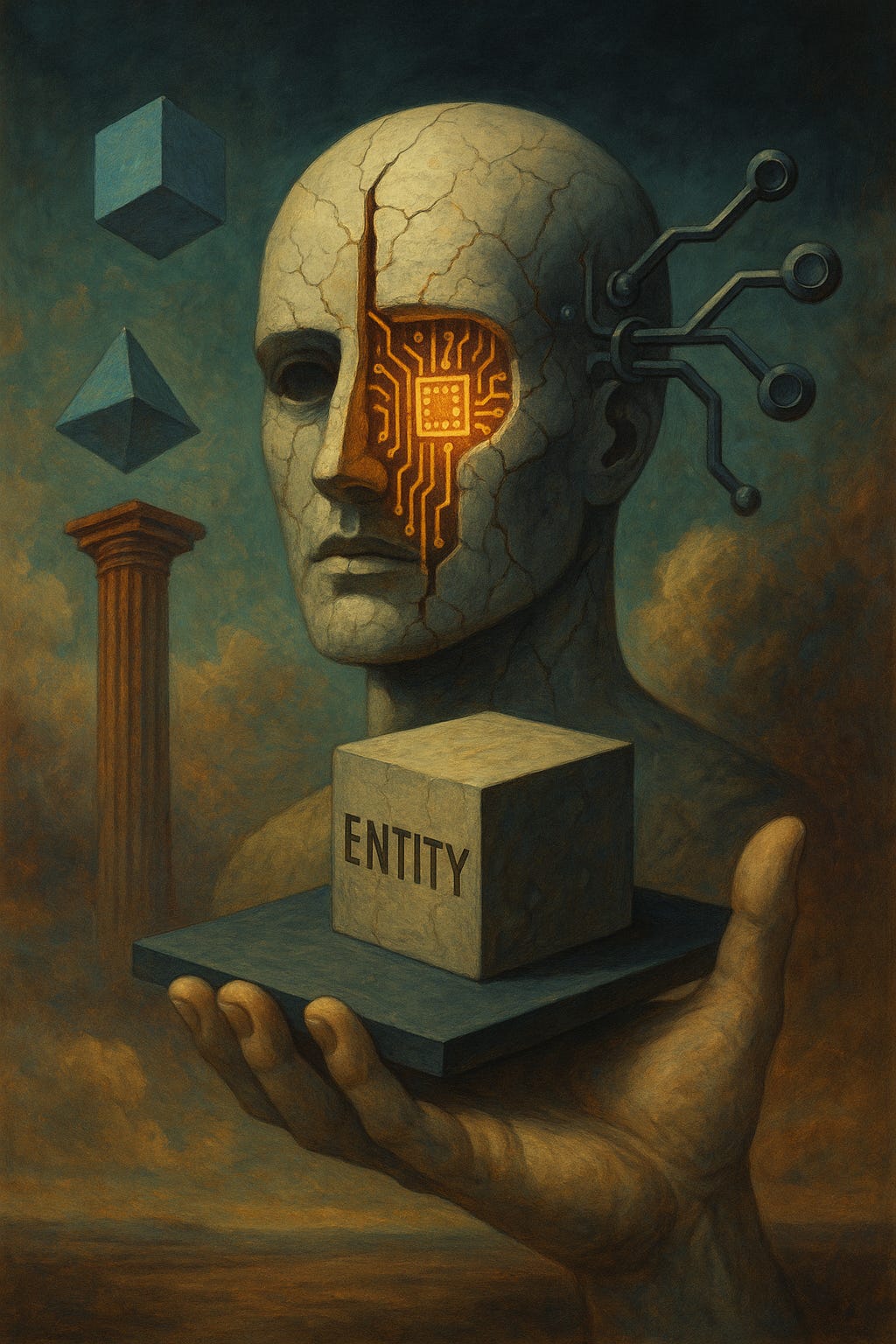What Is an Entity? Why Ontology Isn’t Just for Philosophers Anymore
In philosophy, an entity is anything that is—a being, a thing, a structure, a process. It’s the stuff of existence. In tech, especially in databases and AI, “entity” has become one of the most casually powerful words we use. But what do we really mean by it?
At first glance, an entity is just a record in a system.
In a CRM: a contact, a company.
In a database: a row in a table.
In a knowledge graph: a node.
But scratch the surface, and it gets stranger.
From Aristotle to SQL
Aristotle called entities “substances”—things that exist in themselves and not in something else. For him, you weren’t just labeling things; you were organizing being. Fast-forward 2,000 years, and your database schema is doing the same thing. It defines what counts as a real “thing” in your system.
Are clicks entities?
Is a conversation thread an entity or just a relationship between others?
What about a thought? A prompt? A mood?
These aren’t just modeling questions. They’re metaphysical commitments disguised as product decisions.
Entities Are Commitments
To say “this is an entity” is to say:
It matters.
It persists.
It has a shape that can be known, tracked, and reasoned about.
Every startup makes these decisions implicitly. A new feature isn't just code—it’s a redefinition of what counts as real inside your product’s universe.
Calendly made “availability” an entity.
Notion made “blocks” the atomic unit of thought.
Tourial.com made “microtours” into interactive entities that reflect buyer intent.
The unit of ontology becomes the unit of value.
AI Makes This Urgent
As AI systems build and reason over “world models,” the question of what is an entity gets operationalized. LLMs aren’t just autocomplete engines—they’re impromptu metaphysicians. They create, collapse, and reuse entities on the fly.
Prompt: “Summarize this article.”
→ But what is the article?
→ Where does it begin and end?
→ Is the tone part of the entity? Is the intent?
These aren’t edge cases. They’re front and center in retrieval, summarization, and personalization pipelines.
What You Can Do With This
If you build products, model data, or work with AI:
Audit your ontology. What are your core entities? What are you missing?
Watch your relationships. Relationships imply ontologies too. Is X part-of Y or just associated-with?
Think in layers. Some entities are operational, others are epistemic (what the system believes), and others are emergent.
You’re always building a worldview. You might as well get good at it.
An entity is more than a data object. It’s a philosophical stance wrapped in a software pattern.
And the more intelligent our systems become, the more that stance matters.


